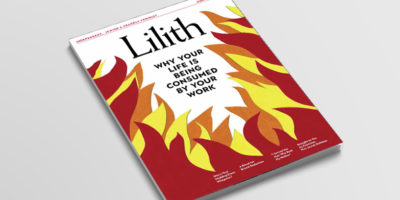
Jews & Gender in the Jim Crow South
The migration of roughly two million eastern European Jews between 1881 and 1924 sparked national anti-Semitic speculation about Jewish inassimilability, driving native-born coreligionists to step up efforts to provide material support as well as guidance on the finer points of becoming American. In the post-Reconstruction South, the effort to take care of impoverished coreligionists was amplified at the crossroads of economic turmoil, profound shifts in the way racial differences were known, and violent policing of the color line, creating for Southern Jews a compulsion to excel in the performance of charity or else fall prey to the region’s most lethal exclusions.
Rules of race, sex, and gender comportment scripted the boundaries of belonging while shaping the conventional wisdom by which southerners came to see themselves and those around them as full, partial, or nonmembers of their community. For Southern Jews, exhaustive knowledge of and adherence to these norms proved vital to communal efforts to flourish as southerners on the white side of the color line.
The first Jews who arrived in the American colonies were allowed to remain only if they took care of their own poor, and this mandate became a central part of Jewish claims to exemplary citizenship going forward. Narratives of unique self-sufficiency and lovingkindness fortified Jewish claims to belonging and shaped the character and form of Jewish benevolence nationwide. However, in the wake of the Civil War, early Southern Jewish appeals to universal, national citizenship shifted to accommodate a regional model of belonging based on chivalric ideals of honor and collective memory.
Entrepreneur Jacob Furth wrote in an 1895 issue of The Magnet, “ Those [Jewish men] who have fallen into the pauper class should be made to understand that there is no room for them as Jews.” Not merely a temporary setback on one’s path to success, pauperhood signified a pathological incapacity for independence and a basis for exclusion from community membership. The concept also suggested failed masculinity, for those men who fell into the “pauper class” could not emulate the key characteristic of masculine citizenship, namely, the ability to support a family. Such men were threats to the public performance of Jewish self reliance in a region that placed significant stock in masculine self-sufficiency and honor….
In 1914, several Jewish members of the Macon, Georgia, community appealed to the Atlanta Hebrew Orphans Home to accept custody of four children whose father had absconded to North Carolina. Letters they wrote to Superintendent Ralph Sonn reveal their concern that the children’s mother, Margaret Goldfarb [not her real name], was ill equipped to raise her children in a manner the community considered appropriate. Following prevailing expectations for genteel understatement and discretion when it came to sensitive issues, three members of the community wrote to the home’s Board of Directors. “Frankly speaking,” wrote one, “these children are growing up wild and totally without any religious training.” In addition to their concern over the children’s alleged lack of guidance, members of the Macon community highlighted the mother’s failure to keep an adequately vigilant watch over her two daughters’ moral upbringing. Worried about Mrs. Goldfarb’s maternal inadequacies, particularly her inability to raise upstanding Jewish ladies, they aggressively petitioned for the orphan home’s swift intervention.
Mrs. Goldfarb’s initial failure to secure a divorce from her husband was a source of significant concern for the institution, for most professional social workers and benevolent leaders at the time believed that aiding the dependents of an errant man only encouraged his irresponsibility. Yet members of the Macon community insisted that this case merited the home’s attention, even if it meant bending the institution’s rules. At the root of their insistence lay a profound concern for the children’s upbringing. As one neighbor wrote, “We Macon people realize that the sooner the children are placed in charge of the home just so much better will be their condition.”
In this desertion case, as in many others in the early 1900s, the home gave into pressure from the community, because the alternative—to allow Jewish children to remain in a home with little supervision and minimal access to the guidance that would shape them into respectable, self-sufficient adults— was unthinkable. Many questioned the ability of abandoned mothers to provide proper care and to model elevated cultural capital for their children.
While these episodes of misplaced feminine dependency and masculine recalcitrance were recurring topics of debate among Jewish social workers nationwide, the problem of wife abandonment took on special urgency in the South. Desertion signified extreme gender transgression in a region that prized strict racial segregation and white women’s protection in the private home.
Moreover, benevolent agencies’ efforts to determine which deserted women were “worthy” of institutional subsidies, allowing them to keep their children at home, and which ones, like Goldfarb, were “not fit to care” for their own children, hinged on the mother’s performance of refined femininity, the location and aesthetic conditions of her home, and her willingness to follow institutional mandates regarding her children’s care. Often unsure of who was deserving of their sympathy and assistance, benevolent leaders demonstrated in their dealings with abandoned mothers their own social ambivalence and assimilationist anxieties.
The dilemma of desertion was further complicated by Eastern European gender customs, which did not always translate seamlessly to white, middle-class U.S. culture, where respectable, married women were “guardians of home and family” rather than valued wage earners. Historian Susan Glenn highlights the “breadwinning partnerships” that prevailed among Jewish couples in the late nineteenth- and early twentieth-century shtetl, where wives’ paid work enabled their husbands to study the Talmud. Further, wartime upheaval throughout the Russian empire intensified the conditions under which women learned, in historian Elizabeth Reis’s words, to “tailor (often literally) their skills to the marketplace” as a means of survival. And while Eastern European Jews traditionally celebrated men’s intellectual pursuits, such unpaid activity in the United States was considered unproductive and unmanly. Men who repudiated their breadwinning responsibilities publicly rejected a vital principle of U.S. citizenship and violated unwritten codes of American production and consumption. While women’s paid labor had comprised an essential part of family survival in Eastern Europe, American gender, race, and class ideals confined the labor of white wives and mothers to the home.
The South’s predominantly agricultural economy and racialized distribution of labor also contributed to Jewish anxieties over desertion, not just as a transgression against the Jewish family, but also as a uniquely troubling crime against the region’s gender ideals. Jewish men’s failure to sustain their breadwinning responsibilities disrupted Jewish claims to white masculine privilege just as it brought into question the right of Jewish women to a space on the Southern lady’s protective pedestal. In this time and space, Jewish claims to white masculinity and white femininity could be fragile, and Jewish men’s public transgressions against “respectable” breadwinning ideals threatened the hard-won legitimacy for which Jews had struggled for centuries.
Case records confirm that the institutional gaze extended deep into the private lives of its beneficiaries. Such vigilant surveillance was of vital importance to benevolent leaders’ sense of control over the project of uplifting the foreign-born Jewish masses. Institutional leaders often asked local rabbis or members of B’nai B’rith, the National Council of Jewish Women, or benevolent societies to visit subsidized families and report back on their condition. Volunteers were deputized as temporary social workers who kept in contact with clients and reported to the institution on the state of their neighborhoods, homes, and the condition of the individuals occupying those homes.
While Jews nationwide constructed a benevolent empire that reached throughout even the smallest communities, in the South the performance of benevolence was no less than a matter of survival. Benevolence served as a means for established members of this minoritized community to control the process of meaning-making by which authentic citizens were known. The Jews of the South therefore became paragons of benevolence in large part because they needed to “take care of their own” in order to navigate the region’s precarious racial terrain.
Belonging in the South was not just a matter of imitating whiteness; it required a complex staging of one’s membership in an ostensibly united community of chivalrous men and respectable ladies. In the Jewish South, benevolence and honor—concepts infused simultaneously with gendered and racialized meaning—were inseparable, and immigrant Jews had to learn to navigate an unfamiliar political and cultural climate in which particular modes of etiquette and collective memory were essential.
Caroline E. Light is Director of Undergraduate Studies at Harvard’s program in Studies of Women, Gender, and Sexuality. This is excerpted with permission from her book That Pride of Race and Character: The Roots of Jewish Benevolence in the Jim Crow South (© 2014, New York University Press).


